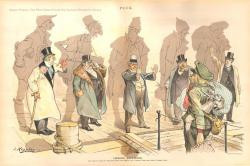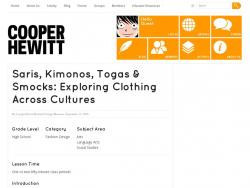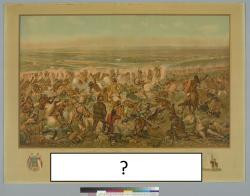Kate Harris
Social Studies teacher
Pittsburgh CAPA
Middle School (13 to 15 years old), High School (16 to 18 years old)
Teacher/Educator
Language Arts And English, Civics, Literature, Cultures, Economics, Social Studies, Geography, Writing, US History, Arts, Other
I'm a history-lover, art fan, and bookworm. I taught high school history (U.S. History and World Religions) for ten years in North Carolina, teach currently in Pittsburgh, PA, and am working to help teachers make the most of this new resource!
Kate Harris's collections
Powerful Symbols and Words: Abolitionism & Women's Rights
<p>This collection looks at an image and phrase used widely in abolitionist materials, and at how that symbol was adopted and adapted by Sojourner Truth and/or other women's rights activists. Students will examine an abolitionist medallion and then learn about Sojourner Truth through a short reading, image analysis, and video. They can then review two version's of Sojourner Truth's speech and consider why the second version, as reported by another suffragette, Frances Gage, is markedly different. This collection is designed to be used as a short stand-alone lesson on the topic of the abolition movement and its intersection with the women's movement in the United States.</p><p>Tags: compare and contrast, change over time, "Ain't I a Woman?", abolition, slavery</p>
 Kate Harris
Kate Harris
4
Evaluating America's First System of Government
<p>What kind of government best suited the needs of the rebelling colonists? In this learner resource, students will learn about the Articles of Confederation and determine if they should be remembered positively or negatively. What were the strengths of the Articles? What were the weaknesses that led to the Constitutional Convention, and the writing of a new form of government, our current Constitution?</p><p>tags: articles of confederation, whiskey rebellion, northwest ordinance, declaration of independence</p>
 Kate Harris
Kate Harris
8
Exploring American Ideals in Art
<p>How can American ideals be defined and expressed in different ways? The United States of America is associated the ideals of Democracy, Rights, Liberty, Opportunity, and Equality. Those values have served as sources of inspiration for artists as goals that the nation aspires to (even if they are not always achieved). This collection contains artworks inspired by one or more of the ideals listed above. Students should choose a work and identify which ideal it relates to: Democracy, Rights, Liberty, Opportunity, and Equality. </p><p>In a short essay based on the artwork, students should answer the following questions:</p><p>-How would the student define Democracy, Rights, Liberty, Opportunity, or Equality?</p><p>-What is the artist trying to communicate about how this idea plays out in America?</p><p>-Does the student agree or disagree with the artist's interpretation?</p><p>If desired, students could create their own artwork based on one of the American ideals.</p>
 Kate Harris
Kate Harris
21
The 1850s and Causes of the Civil War
This collection includes artifacts, stamps, political cartoons, portraits, and videos representing various long-term and short-term causes of the Civil War. Students could use the collection as the basis for a sorting activity:
Which causes are long-term and which are short?
Which represent economic, social, or political differences between the North and South?
Can they be put in chronological order?
Which show attempts at compromise and which show that violence was difficult to avoid?
Additional teaching ideas are listed in the Notes to Other Users section.
 Kate Harris
Kate Harris
33
Bushido, Bun, and Bu: Life as a Samurai
This collection includes resources reflecting the ideal characteristics of a Japanese samurai. After reviewing the resources in this collection, students will be able to:
-analyze the changing role of the samurai in Japanese society
-define and give examples of bushido, bun, and bu
-compare the expectations for samurai with those of other social groups
Students will begin by visiting two websites in order to gain background information on samurai. They will then read an excerpt from The Way of the Samurai and answer questions. Next, they will review a series of resources and determine whether they represent bushido, bun, or bu. Finally, students will begin a comparative research assignment.
 Kate Harris
Kate Harris
16
Great Ideas, Modern Art, and Advertising
This collection consists of advertisements created for the Container Corporation of America in the 1950s. Each advertisement pairs a quote from a "Great Idea of Western Man" with a work of original art. After reviewing the collection, students will create their own art work to reflect a "Great Idea" that they think is important and meaningful in the world today.
 Kate Harris
Kate Harris
11
How a Bill becomes a Law
<p>How can ideas become legislation? This student activity reviews the process of how a bill becomes a law. Students may choose from two videos to watch, and then can read through the collection and investigate the resources. They may want to take notes on the process. Finally, a sorting activity assesses whether or not students truly understand the process of creating new legislation in the United States.</p>
 Kate Harris
Kate Harris
12
Sitting for a Portrait
<p>Have you ever sat while someone painted your picture or took a photograph? How does it feel? What do you think about while it occurs? This student activity begins with a portrait of George Washington and a letter describing his attitude towards portraits. After students reflect on these, they will choose another portrait from the set and focus on developing observational skills and an attitude of empathy by examining the work closely and imagining the perspective of one of the people in the image. </p><p>Tags: portrait, point of view, perspective, Washington, Pine, de Kooning, John F. Kennedy, JFK, Norman Rockwell, Mitchell, Spalding, video, self-portrait</p>
 Kate Harris
Kate Harris
9
Globalization and Cultural Diffusion
<p>This student activity focuses on the concepts of globalization and cultural diffusion. Students will look at a variety of artifacts and explain how they illustrate the two concepts and/or help answer the guiding questions below:</p><ul><li>What is globalization and how does it affect people and places?</li><li>What leads to cultural diffusion?</li></ul>
 Kate Harris
Kate Harris
10
The Art of Writing and Calligraphy
This collection includes a variety of resources representing styles of writing from around the world. It encourages viewers to consider writing not only for its ability to communicate through letters and symbols, but also for its artistic value. The collection includes a video on Sumerian writing, a website on African writing systems and art, and artifacts that are examples of the writing of East Asian, Arabic, Cherokee, Hebrew, and Modern European alphabets. In addition, a few tools used for writing are included. There is some background material on each type of writing as you read through the collection.
Questions for classroom discussion and research might include:
-What is the purpose of writing? Why use hand-writing or calligraphy instead of using a computer?
-How do alphabets differ?
-How can a style of calligraphy (or font change) the interpretation of a written work?
 Kate Harris
Kate Harris
29
Numbers
<p>This collection is an example of how the Learning Lab could be used to create number or alphabet books for younger students. Students can search for the numbers and letters represented in the art, sculpture, and artifacts that exist throughout the Learning Lab. </p><p>Alternatively, students could be given a specific theme (animals, for example) and be tasked to find images representing the theme for each letter or number. Annotation (notebook tabs) can be used to include additional text or explanations. Quiz questions could be used to ask "how many ________ are in this image?".</p><p>Have fun!</p><p>Tags: reading, books, alphabet, numbers, counting, math, young learners, early childhood</p>
 Kate Harris
Kate Harris
17
Artifacts from the Battlefield: WWI
This is a collection of artifacts from World War I, including photographs, uniforms, and some surprising contributors. Students will watch a video to observe how a curator connects an object (in this case a woman's AFFW uniform) to the person who used it, and then choose three objects from the collection to study before sharing findings with other classmates. Students should think about the guiding questions below as they investigate the objects in the collection.
Guiding questions:
How was World War I different from wars that came before?
What impact did technology have on the war?
What kinds of threats did soldiers face during World War I?
How did soldiers find comfort during World War I?
How might the experience of World War I have influenced the culture and politics of the years following it?
 Kate Harris
Kate Harris
14











